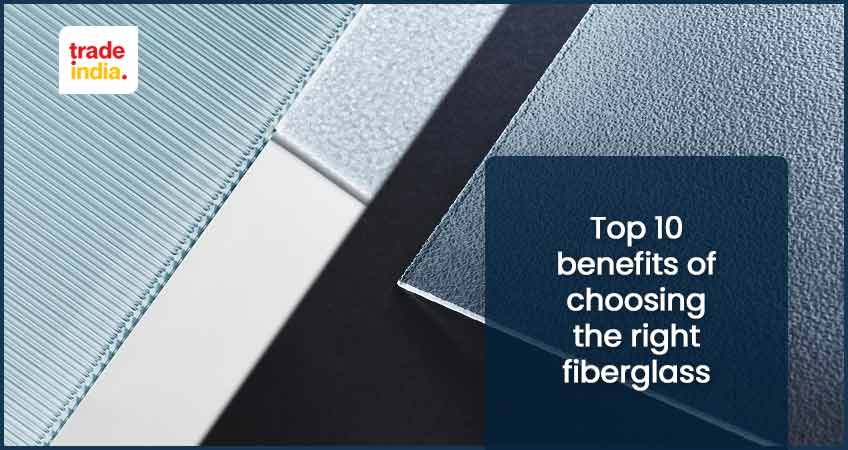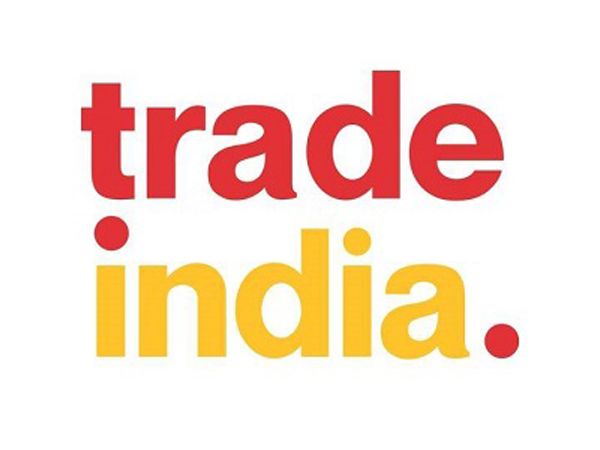Top 10 Benefits of Choosing the Right Fiberglass

Glass fibers are the main component of Fibreglass, a type of fiber-reinforced plastic. Fibreglass is a type of glass-reinforced plastic that also goes by the names glass-reinforced vinyl and glass fibre-reinforced vinyl. As a rule, glass fiber is either laid down in a random pattern or woven into a fabric. Depending on the final product's use, glass fibers can be manufactured from a wide variety of glass kinds.
Fibreglass, also known as glass fiber, is a kind of reinforced plastic made from a woven material that is infused with glass fibers that are randomly arranged across each other and held together with a binding component. This composite, made from fiberglass and resin, is both robust and lightweight. Strain mats, which are just fiberglass sheets, and woven fabrics are the two most common ways to obtain the material.
Fiberglass is an excellent material since it is durable, lightweight, and adaptable. Fiberglass is commonly utilized for a variety of purposes, including bathtubs, boats, airplanes, and roofs. Glass fibers are the main component of fiberglass, a type of fibre-reinforced plastic. This is why you may hear people refer to Fibreglass as GRP or GFRP; these other names all refer to the same thing. Generally, glass fiber is either flattened into a sheet, placed randomly, or woven into fabric. Depending on the final product's purpose, glass fibers can be manufactured from a wide range of glass kinds.
Top 10 Benefits of Choosing the Right Fiberglass
1. Ready to combat Corrosion
One of the most frequent reasons to choose fiberglass is it ensures complete reinforcement saturation. It is strongly reinforced by its proprietary method called “Wet-Out”.
Another biggest feature of FRP is it doesn’t allow bugs to affect its surface, and it has a huge range of corrosive environments that will not rot. Multiple corrosive environments including hotels, wastewater treatment facilities, restaurants, chemical plants can take the proven advantages of fiberglass. These FRPs are available for outdoor and indoor uses.
Fibre-glass-reinforced polymers (FRP) are used primarily because of their inherent corrosion resistance. In addition, FRP is the sole material that can withstand the conditions of the intended service. Slim and light When compared to steel, FRP requires only one-seventh the amount, while only half the weight and volume of aluminum are required.
2. Lightweight
Most of fiberglass manufacturers serious about its manufacturing method, they contribute making their fiberglass lighter than steel and aluminum by 70% and 30%. The lightweight fiberglass allows an easy installation, lower transportation, as well as crafting impressive design as per your demand weight savings.
The FRP designers have made their attribute to continue in making lighter and stronger fiberglass in their factories. So, if you’re looking for a fiberglass, don’t forget to check its weight, consider only lightweight material as it suits your need.
Fiberglass has the advantages of being lightweight, robust, and not as brittle as other materials. That fiberglass can be formed into a variety of forms is one of the material's most alluring qualities. Because of these qualities, fiberglass is frequently utilized in a wide variety of industries, including building and construction, civil engineering, residential and business products, transportation, roofing, and even recreation.
3. Impact Resistance
There is no doubt woods aren’t rigid than fiberglass products and doesn’t deform even at the maximum workload. When the fiberglass dinged or hit, the impact resistance quality makes it strong doesn’t allow it to deform or break easily like aluminum, wood or steel.
Fiberglass uses in unlimited applications for handheld devices, especially tools. The ergonomic shape of fiberglass makes it perfect for tool handles. This is the ideal solution to make a barrier between the end user and hot or electrified elements.
Fiberglass is a versatile, safe and corrosion resistance material for your needs that suits physical handling than woods or steel.
4. Reduced Maintenance Cost
The property of Fiberglass is really reduces the requirement for regular maintenance actions, including repair and painting, creating its structural expenses considerably cheaper than conventional components. Compared to alternative materials, FRP is inexpensive to produce, which is an important consideration.
While the cost of stainless steel is lower in the beginning, it might be deceiving if you don't factor in the time and effort required for installation and upkeep. Wood is more affordable yet has far lower durability and resilience. Similar in fiberglass price to steel, aluminum has a greater total cost once you add in things like maintenance and installation. In the end, fiberglass is significantly more affordable than metals like steel and aluminum.
5. No Heavy Lifting or Welding Possibilities
You don’t need to spend extra money on hiring too much workers or equipment for fiberglass installation. Because of its lightweight benefits, you can easily install by hiring less workers, and using equipment.
By using high quality carpentry tools, a workers can fabricate the fiberglass sharply that will eliminates your precious time and on-site injuries. You will just need some FRP related materials and installation equipment.
6. Durable
Because of its resilience in the face of intense public use and the elements, fiberglass products maintain their attractive appearance for an exceptionally long time. Users can look back on their investment in FRP with pride after it has been installed because it maintains its attractive appearance over time.
A product made of fiberglass-reinforced plastic (FRP) is more long-lasting than one made of steel or aluminum; it has a longer and more productive service life, doesn't need to be replaced, and doesn't require much maintenance.
Gel coats, the final finish of fiberglass-molded goods, can be as hard as the object itself and available in a wide range of colors. This gel coat can meet a variety of requirements unique to its intended use, including improved corrosion resistance and enhanced traction.
7. Thermal Properties
The fiberglass insulation material is non-conductive and maintains its temperature independently of its surroundings. Steel and other metals, on the other hand, are heat conductors, making them potentially hazardous in the workplace. FRP does not need to be grounded, so it is suitable for use in places like power plants that present a risk due to the presence of high voltage.
There is no interference with radio waves or electrical impulses when fiberglass is present. This enables its usage in settings where the presence of metal could result in possible threats to health and safety.
8. Electro Magnet Transparency
Electromagnetic frequencies, such as microwaves and radio waves, can pass through fiberglass without being disrupted. Because of this property, items manufactured by designers are frequently used in cellular applications.
9. Flexible
The adaptability of FRP material sets it apart from other content kinds and makes it the preferred option. Saves money on labor costs and is easy to put together. Another perk of FRP is that it helps cut down on labor and installation expenses.
Products made from FRP have a higher flexural threshold than wood, and in terms of the ratio of strength to weight, fiberglass is tougher than both aluminum and steel. FRP products also have a bigger flexural threshold than products made from wood.
10. Safe
As I mentioned earlier, fiberglass sheet has electrical non conductive properties that will ensure safety by providing safe work environment. Fiberglass products crafted with high quality materials along with non-skid elements that may allow you to provide a safe environment to your employees.
Even, the construction of fiberglass is also effortless and fast. The equipment and the less time in constructing fiberglass allow you to focus on your business goal.
It doesn't matter if it's compliance with fire rules, stability requirements, Americans with Disabilities Act (ADA) compliance, or any other building code — fiberglass is easy to adapt to. Compliance with fire and ADA codes are two of the most frequently encountered building requirements.
It is essential that these poles do not conduct electricity in order to safeguard the worker from the possibility of receiving an electric shock and to prevent any damage to the power lines. Engineers that specialize in electrical systems and system design are responsible for developing the apparatus's systems and electrical components.
Chemical engineers and chemists are responsible for ensuring that a variety of resin systems that are used in the production of fiberglass are suitable. The organization is well-known for the technological skills it possesses. Many certifying organizations have given their stamp of approval to fiberglass.
FAQs: Fiberglass
Q. How much does fiberglass cost?
Ans. The cost of Transparent Fiberglass Sheet is Rs 60/sq ft to 80/sq ft in India.
Q. Is fiberglass safe to use?
Ans. If you touch fiberglass, you shouldn't have to worry about any long-term health problems. After being in contact with fiberglass, one's eyes may become red and irritated. When fibers are breathed in, they can cause irritation in the lungs, the throat, and the nose. Exposure to fiberglass may make asthma and bronchitis symptoms worse in some people. Nobody has found any proof that fiberglass promotes cancer.
Q. Can fiberglass be recycled?
Ans. Yes, fiberglass can recycled. There are three main processing methods of recycling fiberglass such as incineration, grinding, and pyrolysis.
Q. What are the products made with fiberglass?
Ans. Pipes, orthopedic Casts, automobiles, aircrafts, boats, swimming pools, hot tubes, water tanks, cladding, surfboards, roofing, external door skin are the products made with fiberglass.
Related Blog Topics:
